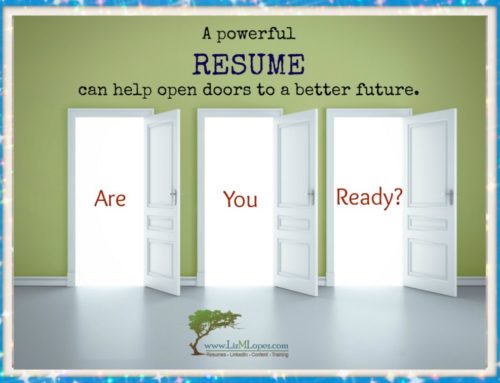As a professional resume designer, I keep in touch with trends in the world of resume writing and every week I review dozens of resumes for strengths and opportunities. Recently, I reviewed several resumes for very well educated and very well qualified job seekers that weren’t getting calls for interviews. They were starting to feel discouraged.
When I reviewed their resumes, I immediately saw the problem. The resumes all displayed the same unfortunate handicap – they had a big BUT(T).
Allow me to explain. I am talking about resumes that are “bottom heavy”. These are resumes that show multiple jobs, but most of the accomplishments are listed in the oldest job, while more recent jobs show very little content. A bottom heavy resume looks something like this:
Current Employer
• Only one or two bullets listed, most describe the company, not the job seeker.
• Bullets describe job duties, not actual accomplishments or quantified results.
Prior Employer
• This job listing is pretty bare and very bland.
• Again, there are job duties listed, but no quantified results.
Long Ago Employer
This listing has lots of information. There is a robust description of duties that is impressive. They way it is written conveys enthusiasm and confidence. The applicant was a rock star.
• The bullets pack a punch, they describe specific projects.
• And they clearly present relevant, eye-catching accomplishments.
• There is even a bullet or two that present powerful results like saved $50K in expenses.
• Or maybe achieved 118% of sales target for 2004, and 123% in 2005.
• An Award! Won President’s Club for outstanding sales for five consecutive years.
• The resume clearly shows that the job applicant was a great producer in this role.
Do you see the BUT(T)s?
BUT(T)# 1:
By having so little to say on the two most recent jobs, and so much to say in an older job, the resume becomes bottom heavy. The beginning looks bare and thin, while the last job looks full and “meaty”.
This creates an unbalanced visual effect. It looks like your career is winding down, instead of winding up. Even if this is true and you’ve had some so-so jobs in the past few years, there is no reason your resume needs to look like this. Good resume design can fix this while using honest information and data.
BUT(T) #2:
A resume like this gives the impression that the job seeker’s best days are in the past. They had a great job, they did amazing work, but what have they accomplished since then? Does the applicant “still have what it takes”? Or is the candidate burnt out, tired, or just plain slacking?
These are not the thoughts you want your resume to inspire. Balancing your career history and showing progressive development of skills and accountability is important. Good resume design can do this, even if your most recent jobs have been simpler or entailed less responsibility.
How to Remove a Big BUT(T)
If this example reminds you of your resume, it’s time for a resume re-design. Your resume needs symmetry. Ideally, more recent roles should appear more robust and contain more information than a job you left 10 years ago. Or you can have all your roles have a very similar volume of information if you can fit it all on two pages.
Even if you were a rock star three jobs ago, resist the urge to overload on older job. Yes, trimming a powerful job description and list of accomplishments can feel scary. The good news is that you can rescue relevant information by moving accomplishments from this job to a central “Career Accomplishments” section at the start of your resume.
Next, you need to feed the job descriptions and accomplishments on your most recent roles. Leaving your current or most recent job in “bare-bones” creates doubts in the minds of hiring managers. You need to show that your performance and value is consistent. If you feel stuck because your role is much smaller than what you are used to, start thinking outside the box.
For example: If you used to manage a team of 50, but you are a not managing anyone in this job, consider other sources of value: Are you mentoring anyone? Have you trained any new hires? Have you been consulted on projects because of your expertise? There are many honest ways to present the value of your contributions.
If this type of “resume surgery” is overwhelming or you just don’t have the time to do this yourself, contact me. I am happy to provide a free review and proposal on how to take your resume from “BUT(T)” to “WOW”.
>~Liz



